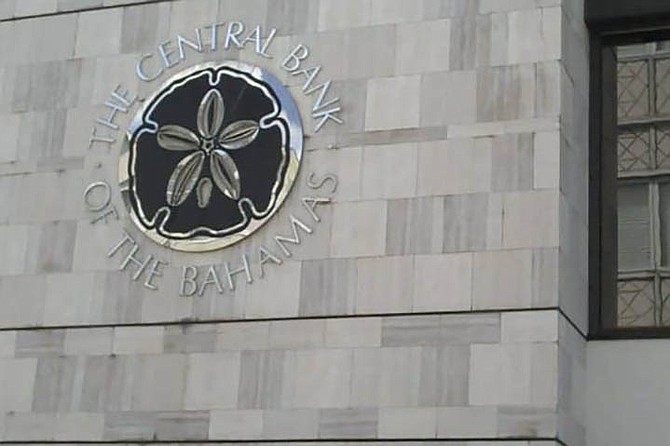* Bahamas' debt service ratio jumps four-fold
By NEIL HARTNELL
Tribune Business Editor
nhartnell@tribunemedia.net
The Central Bank is warning that The Bahamas’ near-100 percent debt-to-GDP ratio will “only partially subside” as the economy begins its recovery from COVID-19’s devastation.
The regulator, in its just-released quarterly economic review for the three months to end-March 2021, confirmed that the national debt - which was just $52m shy of the $10bn mark at the quarter’s end - is now almost equal to the size of Bahamian economic output after the pandemic shaved around $2bn off the latter last year.
The government’s direct debt and the national debt, the latter of which includes contingent liabilities such as direct debt guaranteed on behalf of state-owned enterprises (SOEs) such as Bahamasair, were pegged at 92.3 percent and 96.4 percent of Bahamian gross domestic product (GDP) respectively as at end-March 2021.
This compares to 56.8 percent for direct government debt, and 62.4 percent for the national debt, ratios as a percentage of GDP as at March 2019. The debt surge over the past two years thus provides further evidence of the scale of the economic and fiscal damage inflicted on The Bahamas by the combination of Hurricane Dorian and COVID-19, and the extent of the hard recovery work that lies ahead.
Detailing the size of the debt blow-out produced chiefly by the pandemic, the Central Bank’s report said: “The direct charge on the government rose by $108.2m (1.1 percent) over the quarter, and by $1.635bn (20.7 percent) on an annual basis to $9.526bn at end-March 2021.
“A disaggregation by component revealed that Bahamian dollar debt represented 56 percent of the total, while foreign currency liabilities accounted for the remaining 44 percent. The government’s contingent liabilities contracted by $17.2m (3.9 percent) over the previous quarter, and by $296.1m (41.2 percent) year-on-year to $421.8m.
“As a consequence, the national debt - inclusive of contingent liabilities - expanded by $91m (0.9 percent) over the three-month period, and by $1.339bn (15.5 percent) on an annual basis to $9.948bn,” it added.
“As a ratio to GDP, the Direct Charge rose by an estimated 12.6 percentage points on a yearly basis to 92.3 percent at end-March. In addition, the national debt-to-GDP ratio firmed to an estimated 96.4 percent compared to 86.9 percent in the same quarter of 2020. The ratio is expected to subside, though only partially, as the GDP base recovers from the pandemic.”
A further indication of the looming fiscal crisis facing The Bahamas and its government is provided by the near four-fold increase in the latter’s debt service ratio, which jumped from 5.1 percent in 2020 to 21 percent this year.
This measures the amount of money that a country spends to service interest and principal repayments on its national debt as a percentage of its export earnings, which in The Bahamas’ case come primarily from tourism and financial services.
The lower this ratio is, the healthier a country’s finances are, and most nations have ratios between five percent and 20 percent. The Bahamas is now outside this relative safety or comfort zone.
“Relative to the same quarter of 2020, total foreign debt service payments grew by $36m (61.5 percent) to $94.5m. The outturn was due largely to a $28.1m expansion in the Government’s component to $62.8m, as amortisation payments increased by $23.3m to $38m, while interest charges moved higher by $4.8m to $24.8m,” the Central Bank report said.
“Further, the public corporations’ debt service payments rose by $7.9m to $31.6m, as amortisation payments advanced by $11.8m to $23.3m, overshadowing the decline in interest charges by $3.9m to $8.4m.
“As a result of these developments - and significantly impacted by revenue contraction - the government’s debt service to revenue ratio stood at 11.3 percent at end-March, an increase of 6.0 percentage points over the previous year, while the debt service ratio firmed to 21 percent from 5.1 percent in 2020.”





Comments
tribanon 2 years, 10 months ago
Even worse than I thought with no update on the level of our country's foreign currency reserves which are now being entirely propped up by very costly new government borrowings denominated in foreign currencies. Meanwhile our ever growing and most grossly over-bloated civil workforce continues to enjoy no reduction in pay or benefits.
Sign in to comment
Or login with:
OpenID